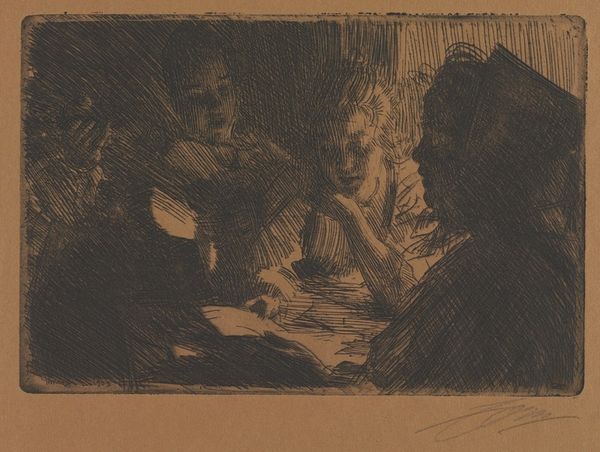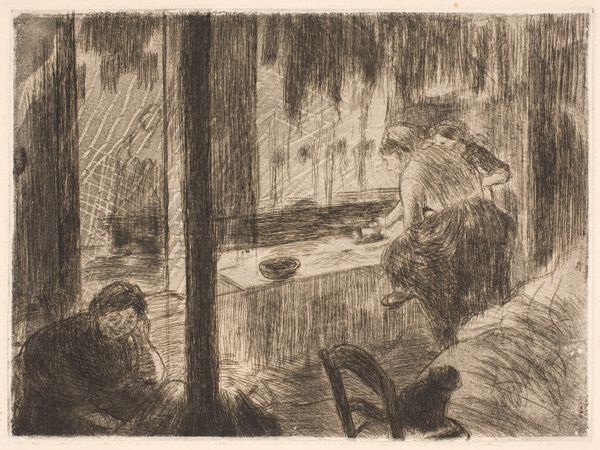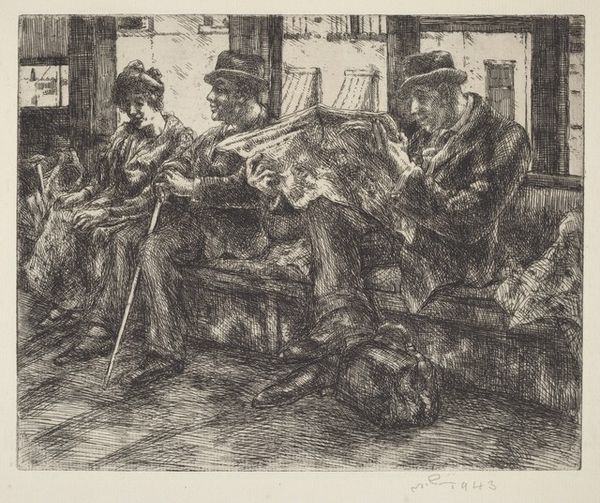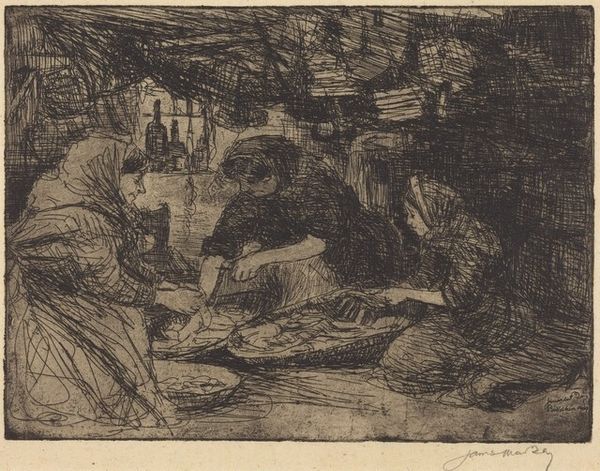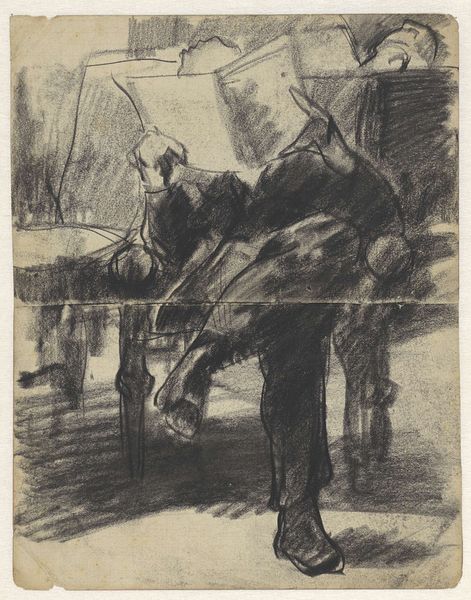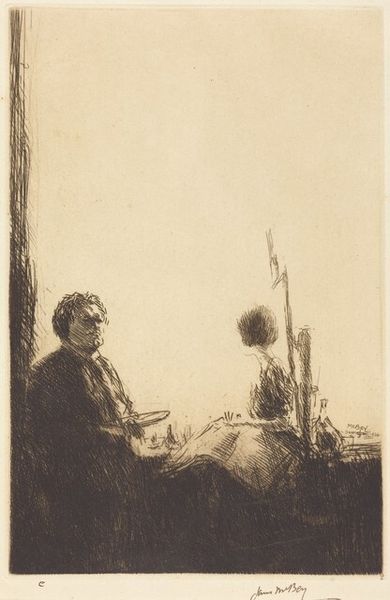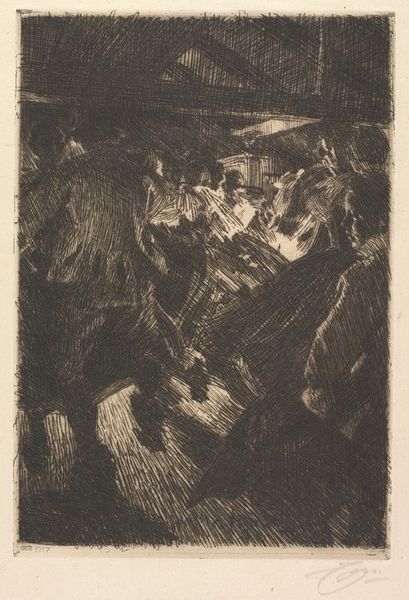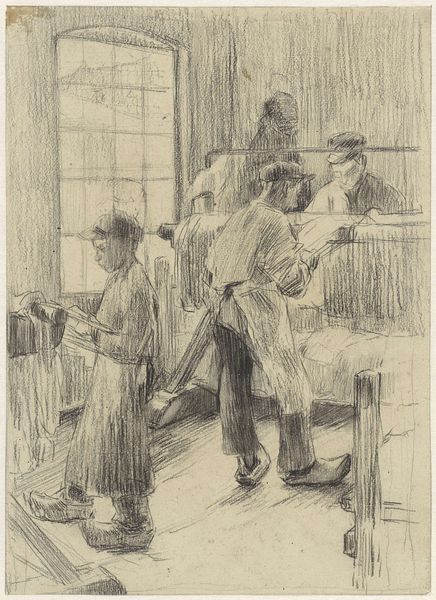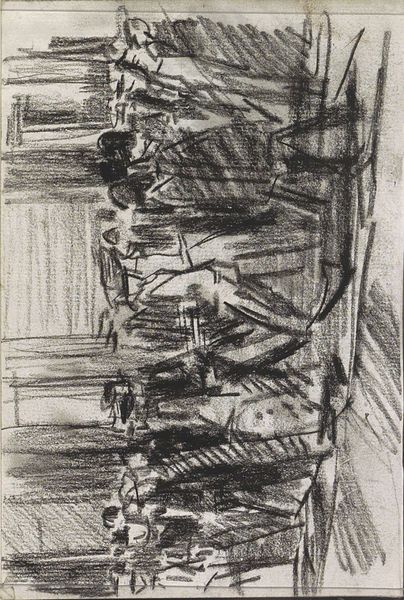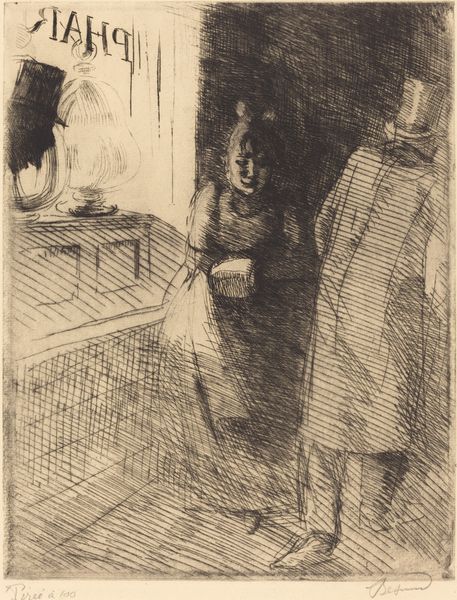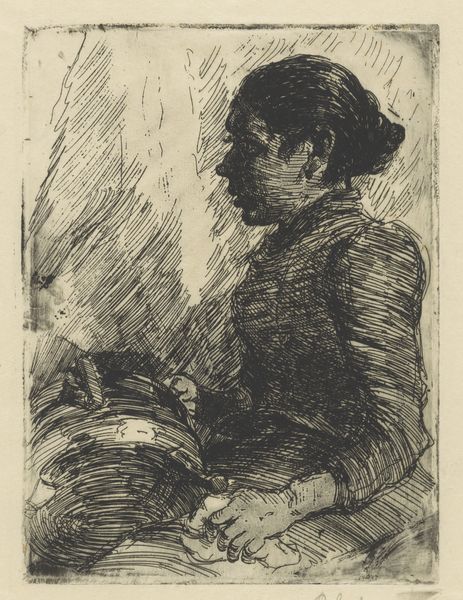
Copyright: Public Domain: Artvee
This is Anders Zorn's ‘Omnibus,’ rendered through etching, a dance of lines that evoke a tableau of urban life. The passengers, captured in a moment of transit, reveal more than just faces; they embody a collective mood, a shared experience of modernity. Consider the motif of the crowd, so persistent across epochs—from ancient Roman forums to bustling Renaissance marketplaces. Here, in Zorn's carriage, this motif evolves. Each figure, though physically close, exists in their private sphere, their gaze averted, lost in thought. It's a silent dialogue, a communal yet isolating journey. Observe how this scene resonates with similar depictions of crowds throughout art history. From Daumier's railway carriages to the later alienation found in Edward Hopper's paintings, the theme persists: the individual amidst the throng. The emotional undercurrent is palpable, as if the collective anxieties and dreams of a society are condensed into this small, moving space. The motif will resurface, evolve, and take on new meanings in different historical contexts.
Comments
No comments
Be the first to comment and join the conversation on the ultimate creative platform.


